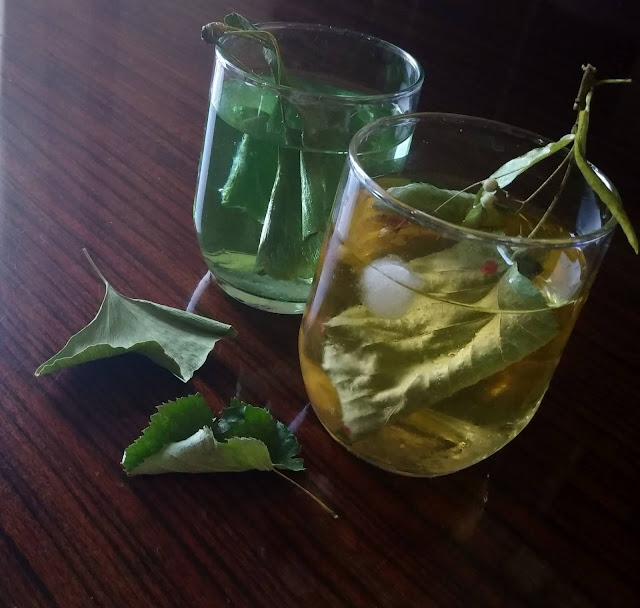Welcome spring!! March, the yellow color month!
March
marks the beginning of spring but also the fateful season change The days are
luke warm, the light stays up late. The first trips are carried out with some
allergies as nature awakens. The classic ailments are tiredness, sleeping difficulty
(here also the transition to summer time takes over), moodiness, you feel or better
see while trying the spring wardrobe, the "swelling baly" due to the
calorie meals consumed during winter.
Climate
change also induces a change in our body, waking up from hibernation and ready
to start. Here I recommend some easy-to-reach and very useful plants. In any
case, I DO NOT recommend using drains and detox plants, their use must be
limited, controlled and especially recommended in April and March. Their
disproportionately use will decrease our immune defenses which we still need in
this period.
"Food"
lactic ferments: Here we talk about probiotics and prebiotics.
As you
well know, probiotics are live organisms which, if administered in a suitable
quantity, bring different health benefits including in the case of intestinal
inflammation, help digestion, well-being of the oral cavity, during and after
an antibiotic-based therapy, increase the immunitary defense. Instead
prebiotics act as a nutrient substrate for probiotics, so probiotics need
prebiotics to feed and stay alive in our microbiota.
The
sources of probiotics and prebiotics in synergy are LIKE white yogurt with oat
flakes or with inula or OTHER fiber, sauerkraut on a bed of brown rice, slow
rising sourdough, fermented cheeses and buttermilk. Here I open a parenthesis
on miso, tempeh and kombucha which are, not being used in our regions such as
those mentioned above, these still makes them "under observation"
even if they are widely used and suitable in Chinese folk medicine.
Enjoy your reading and in await of your comments! See you soon!
Lavender:
the plant of mistrust.
Lavender
flowers contain an essential oil rich in linalool, linalyl acetate, limonene,
cineole, camphor, alpha-terpineol, beta-o-cymene as well as tannins, ursolic
acid, flavonoids and bitter substances. This phytocomplex leads to slightly
sedative and calming activity on the nervous system, therefore useful in case
of anxiety, agitation, nervousness, headache and stress and insomnia. Therefore
useful not only as a soothing nerve but also for dizziness, migraines of
nervous origin; as an expectorant and balsamic in the treatment of colds, flu,
cough; it decreases and contrasts the formation of intestinal gas, has
carminative and antispasmodic properties as it calms abdominal pain and spasms
and helps to relax the muscle, muscle relaxant.
For the
infusion, just a spoonful of lavender flowers on a cup of boiling water with
the heat off, cover and leave to infuse for ten minutes. You filter and drink
when needed.
However,
we need to understand the causes of our inner "malaise" in order to
be able to face it in the best way. Autogenic training, yoga, sports, outdoor
walks and a beautiful yellow color can be a first aid for these moments.
Propolis-pollen-honey:
an encyclopedia opens here.
Propolis
has been used by the Egyptians, Inca, Persians, Romans, Greeks and up to modern
medicine in some countries as a natural antibiotic as it increases immune
defenses, local anesthetic, spasmolytic, protects the liver, anticancer as it
is an excellent antioxidant, antiviral and antifungal, fights the formation of
caries, protects the oral cavity and therefore ideal for seasonal ailments. The
handicap is the presence of wax which makes it "problematic" to which
gastric problems are attributed. It is not recommended in pregnancy,
breastfeeding and for children under the age of one year. An excellent product
would be the dewaxed product with a high content of titrate in total flavonoids
expressed in galangine at least 8% and it should be taken from 300 to 500 mg
per day between meals. Do not forget that propolis is produced by bees because
the resinous substance contained in it covers the hives to protect them from
external agents such as mold, fungi, bacteria, insects
Pollen is
the set of male germ cells of spermatophytes. It looks like a fine and sticky
powder. The foraging bees collect pollen, knead it with saliva, nectar and
royal jelly, bring it to the hive, where it acts as nourishment for the larvae.
So it is a food rich in all the elements necessary for life. Proteins and amino
acids. It has a high content of proteins (30-40%) in the form of free amino acids
(therefore readily assimilable and usable by the body) and essential amino
acids (leucine, isoleucine, lysine, methionine, phenylalanine, valine,
threonine and tryptophan); carbohydrates usable as energy source; vitamins of
which pro-vitamin A (in the form of beta-carotenes), vitamins of group B,
vitamin C, E, H, F and folic acid, minerals of which macro elements (Calcium,
Potassium and Magnesium) and trace elements (Iron, Zinc, Phosphorus, Chromium
and Manganese), fats such as palmitic acid, oleic acid and linoleic acid and
other nutrients such as antibiotic factors, lecithin etc. It has antioxidant,
multifactorial properties, effective against free radicals and oxidative stress
; immunostimulating properties; energizing, tonic and adaptogenic; improves
ovarian function, stimulating and promoting ovulation; anticancer properties,
especially due to the immunostimulating and adaptogenic action;
antihypertensive action therefore also in the control of body weight because it
reduces the blood levels of cholesterol, LDL and triglycerides, from a sense of
satiety, stimulates the metabolism thanks to lecithin.Bee pollen is taken on an
empty stomach, between meals. 1 teaspoon in children a day, for a month.
Honey is
nothing more than an invert sugar with the same properties as pollen and
propolis but more bland. Even if it is sweetened it does not go to produce or
induce the formation of caries. However, it is not recommended for diabetics
and people who need to be careful of sugars!



Commenti
Posta un commento